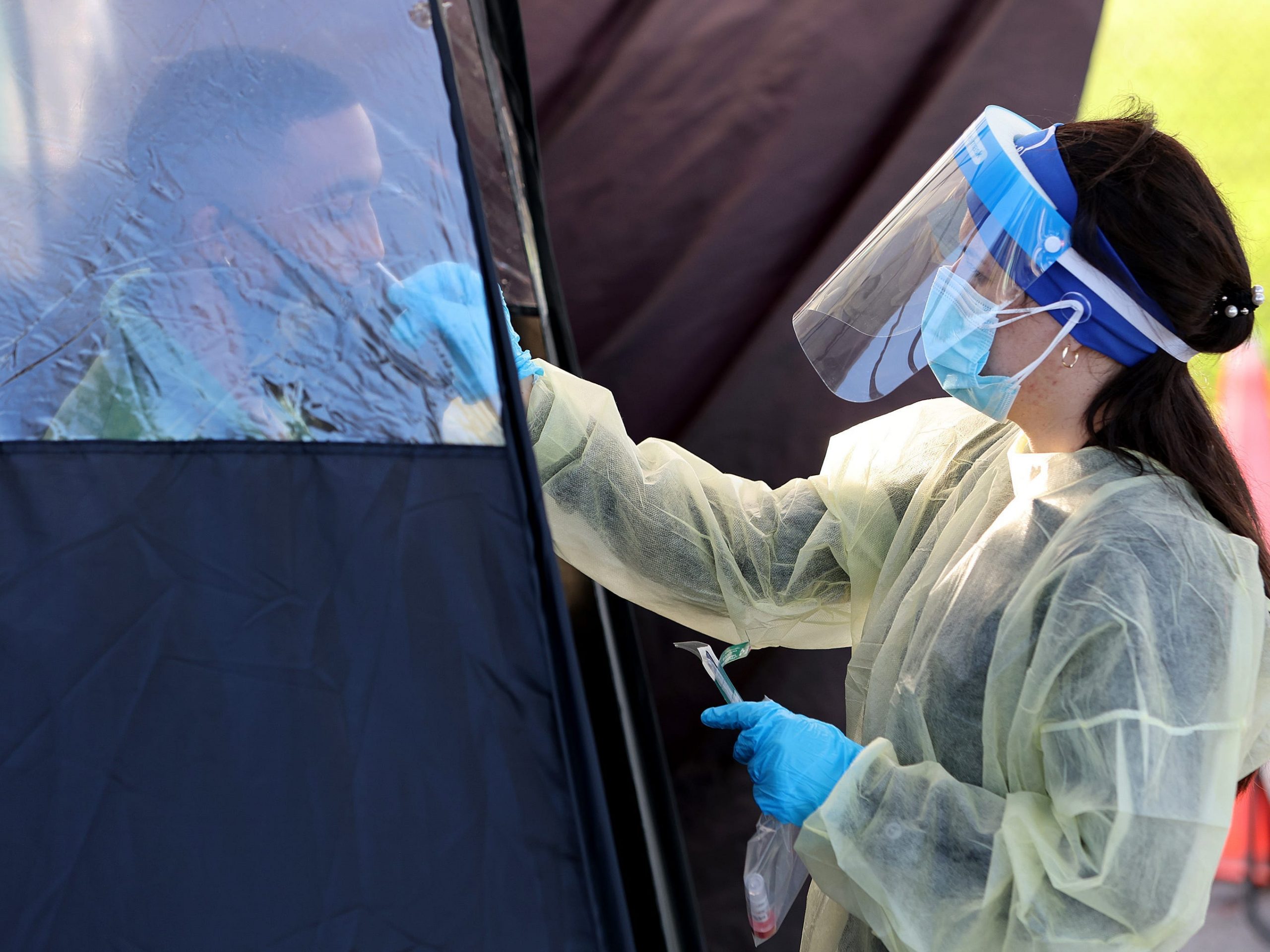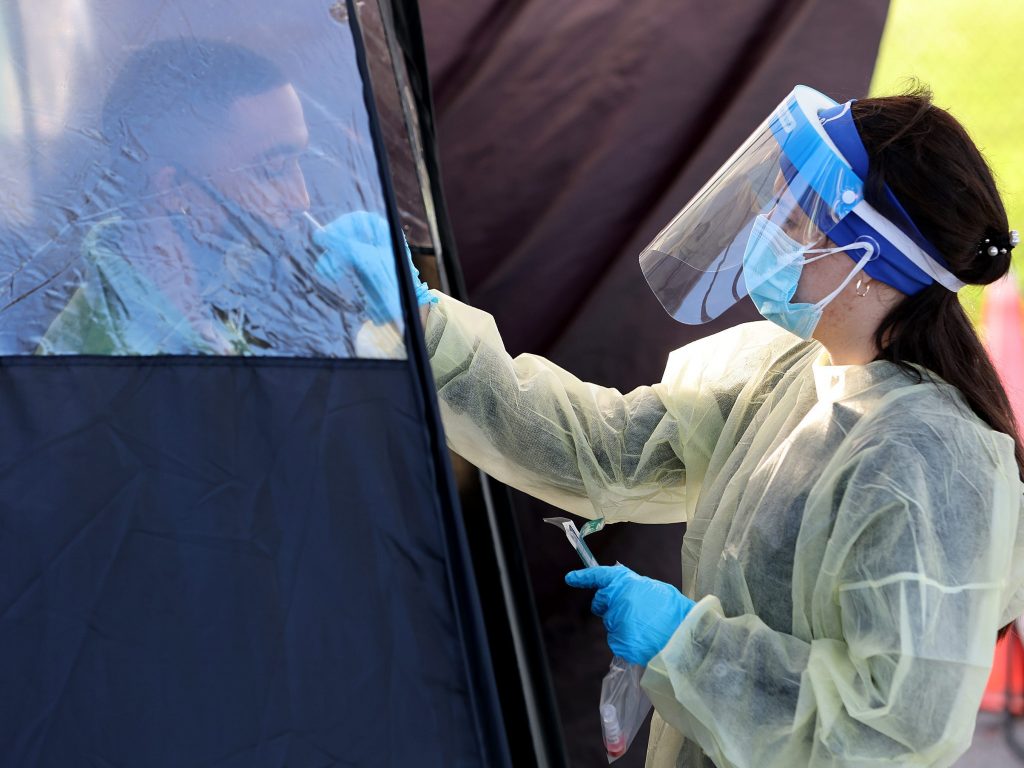
- New US COVID-19 cases have dropped by more than 90% since a January peak, Johns Hopkins data shows.
- The weekly average was around 802,000 COVID-19 cases per day on January 12. It's now around 56,000.
- A short, sharp Omicron wave has also been seen in other countries, such as the UK.
The number of new COVID-19 cases in the US has plummeted by more than 90% since reaching a peak in January, data shows, lending support to officials' views that the country is moving towards a point where the pandemic ceases to be "a crisis".
According to Johns Hopkins University data, the number of cases reached a weekly average of more than 802,000 new cases per day on January 12 — the highest of any point during the pandemic.
As of Tuesday, the figure stood at around 56,000, representing a 93% drop in just over a month, the data showed.
The average number of new hospitalizations, which reached pandemic-highs of more than 159,000 on January 17, had fallen to around 58,000 on Tuesday — a 63% drop. The weekly average number of deaths per day peaked on January 29 at more than 2,600, but had dropped to 992 as of Tuesday, about a 62% decrease, the data showed.
January's record case numbers were driven by the highly infectious Omicron variant, which was first detected in the country on December 1. But the relatively fewer hospitalizations and deaths compared to cases support the assessment that Omicron – while more contagious than previous variants – causes less severe illness.
The short, sharp Omicron wave, in which cases have fallen almost as quickly as they rose, mirrors the experiences of other countries, including France and the UK, which have allowed those countries to ease public health restrictions.
Rochelle Walensky, director at the Centers for Disease Control and Prevention, said in a February 16 press briefing that, in light of declining cases and hospitalizations, all COVID-19 guidance in the US was now under review.
Jeff Zients, the White House coronavirus response coordinator, said in the same briefing that the country was "making strong progress toward moving to a time when COVID is no longer a crisis."
Jennifer Nuzzo, an epidemiologist at Johns Hopkins University told CNBC, that infections were an important "early warning sign", but hospitalizations and deaths were the most important indicator of how the US should respond to COVID-19 in future.
"We have vaccines, we have a virus that, on a per case basis, tends to be less lethal, even though that's very much tied to the level of immunity that exists in our population. Now we have much more abilities to target our resources," she said. "We're in a different state now than we were in 2020," she said, per CNBC.
About 76% of Americans have had at least one dose of a COVID-19 vaccine, according to the Centers for Disease Control and Prevention (CDC).
Walenksy said in Wednesday's briefing that future guidance, including mask recommendations, would be based on metrics that would include hospitalizations as well as cases.
"Our hospitals need to be able to take care of people with heart attacks and strokes," Walensky said. "Our emergency departments can't be so overwhelmed that patients with emergent issues have to wait in line," she said.

